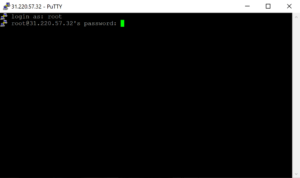The ln command in Linux is used to create symbolic links, also known as shortcuts, to other files or directories. A symbolic link is a special type of file that acts as a pointer to another file or directory. It allows you to access the target file or directory using a different name or location.
The ln command is a part of the coreutils package, which is a collection of basic file, shell, and text manipulation utilities for Linux. It is written in the C programming language and is available for various operating systems, including Linux, macOS, and Windows (through Cygwin or WSL).
The official page for the ln command can be found on the GNU website: https://www.gnu.org/software/coreutils/manual/html_node/ln-invocation.html
Installation
The ln command is usually pre-installed on most Linux distributions. However, if it is not available or you need to update to the latest version, you can install it using the package manager of your operating system.
Installing ln on Ubuntu/Debian
To install the ln command on Ubuntu or Debian-based systems, open a terminal and run the following command:
sudo apt-get install coreutils
Installing ln on CentOS/RHEL
To install the ln command on CentOS or RHEL-based systems, open a terminal and run the following command:
sudo yum install coreutils
Installing ln on macOS
On macOS, the ln command is already available as part of the BSD core utilities. You can access it directly from the terminal.
Usage and Examples
The ln command has various options and can be used in different ways depending on your requirements. Here are some common use cases and examples:
Create a Symbolic Link
To create a symbolic link, you need to specify the target file or directory and the name of the symbolic link you want to create. The syntax is as follows:
ln -s
For example, to create a symbolic link named “shortcut” that points to a file named “target_file.txt” in the current directory, you would run the following command:
ln -s target_file.txt shortcut
This will create a symbolic link named “shortcut” that points to “target_file.txt”. You can now access the file using the “shortcut” name.
Create a Symbolic Link to a Directory
You can also create a symbolic link to a directory using the same syntax. For example, to create a symbolic link named “shortcut_dir” that points to a directory named “target_directory” in the current directory, you would run the following command:
ln -s target_directory shortcut_dir
This will create a symbolic link named “shortcut_dir” that points to the “target_directory”. You can now access the directory using the “shortcut_dir” name.
Forcefully Create a Symbolic Link
If a symbolic link with the same name already exists, the ln command will fail with an error. However, you can use the “-f” option to forcefully create the symbolic link, replacing the existing one if necessary. For example:
ln -sf target_file.txt shortcut
This will create a symbolic link named “shortcut” that points to “target_file.txt”, even if a symbolic link or file with the same name already exists.
Create a Hard Link
In addition to symbolic links, the ln command can also create hard links. A hard link is a direct reference to the target file or directory, rather than a pointer. To create a hard link, you can omit the “-s” option. For example:
ln target_file.txt hardlink
This will create a hard link named “hardlink” that points to “target_file.txt”. Changes made to either the hard link or the target file will be reflected in both.
Similar Commands and Packages
There are several other commands and packages available that serve a similar purpose to the ln command:
- cp: The cp command is used to copy files and directories. It can also be used to create a copy of a file or directory with a different name, effectively achieving a similar result as a symbolic link.
- mv: The mv command is used to move files and directories. It can also be used to rename a file or directory, effectively achieving a similar result as a symbolic link.
- lnk: The lnk package is a Python library that provides a higher-level interface for creating symbolic links. It offers additional features and flexibility compared to the ln command.
Automation Scripts
Here are three example scripts that demonstrate the usage of the ln command in automation:
Script 1: Backup Script
This script creates a backup of a specified file by creating a symbolic link to it with a timestamp appended to the filename.
#!/bin/bash
file="important_file.txt"
backup_dir="backup"
timestamp=$(date +"%Y%m%d%H%M%S")
backup_file="${file}.${timestamp}"
ln -s "$(pwd)/${file}" "$(pwd)/${backup_dir}/${backup_file}"
Script 2: Deployment Script
This script deploys a web application by creating symbolic links to the necessary files and directories.
#!/bin/bash
app_dir="/var/www/myapp"
source_dir="/tmp/myapp"
ln -s "${source_dir}/index.html" "${app_dir}/index.html"
ln -s "${source_dir}/css" "${app_dir}/css"
ln -s "${source_dir}/js" "${app_dir}/js"
Script 3: Development Environment Setup
This script sets up a development environment by creating symbolic links to the necessary files and directories.
#!/bin/bash
project_dir="/home/user/myproject"
source_dir="/home/user/codebase"
ln -s "${source_dir}/src" "${project_dir}/src"
ln -s "${source_dir}/tests" "${project_dir}/tests"
ln -s "${source_dir}/config" "${project_dir}/config"
List of ln Functions and Constants
| Function/Constant | Description |
|---|---|
| ln | The main ln command for creating symbolic links. |
| -s | Option to create a symbolic link. |
| -f | Option to forcefully create a symbolic link, replacing the existing one if necessary. |
Conclusion
The ln command is a powerful tool for creating symbolic links in Linux. It allows you to create shortcuts to files and directories, making it easier to access them from different locations or with different names. The ln command is widely used by developers, system administrators, and power users to manage file and directory structures, create backups, and set up development environments. It provides a flexible and efficient way to organize and access files in the Linux operating system.

This article incorporates information and material from various online sources. We acknowledge and appreciate the work of all original authors, publishers, and websites. While every effort has been made to appropriately credit the source material, any unintentional oversight or omission does not constitute a copyright infringement. All trademarks, logos, and images mentioned are the property of their respective owners. If you believe that any content used in this article infringes upon your copyright, please contact us immediately for review and prompt action.
This article is intended for informational and educational purposes only and does not infringe on the rights of the copyright owners. If any copyrighted material has been used without proper credit or in violation of copyright laws, it is unintentional and we will rectify it promptly upon notification. Please note that the republishing, redistribution, or reproduction of part or all of the contents in any form is prohibited without express written permission from the author and website owner. For permissions or further inquiries, please contact us.



